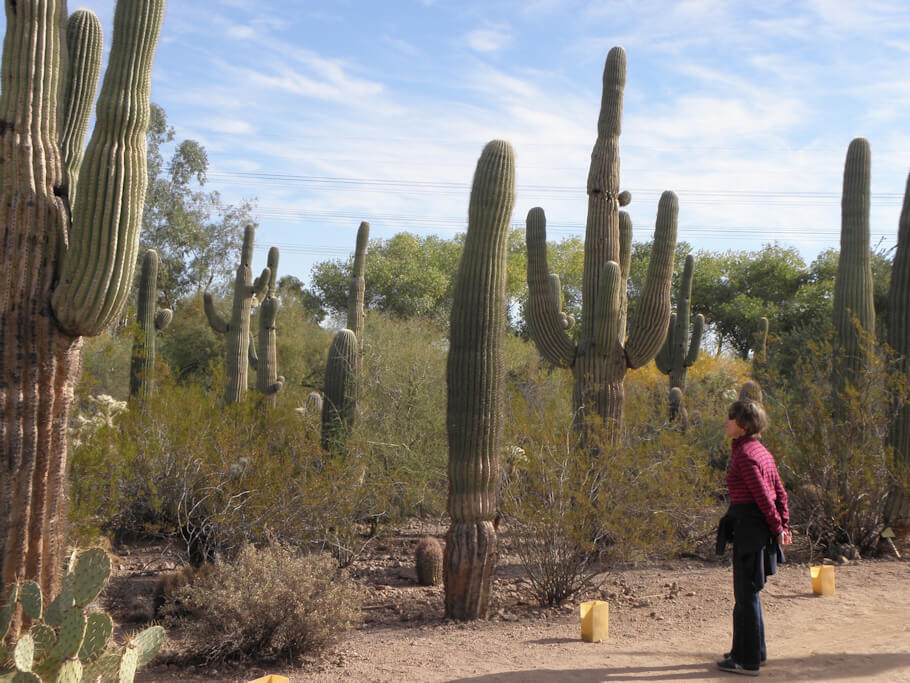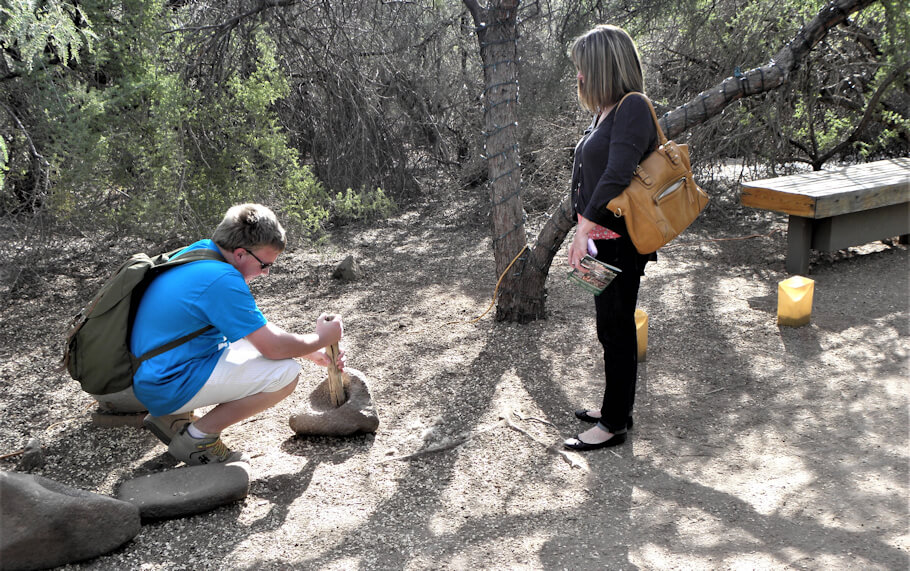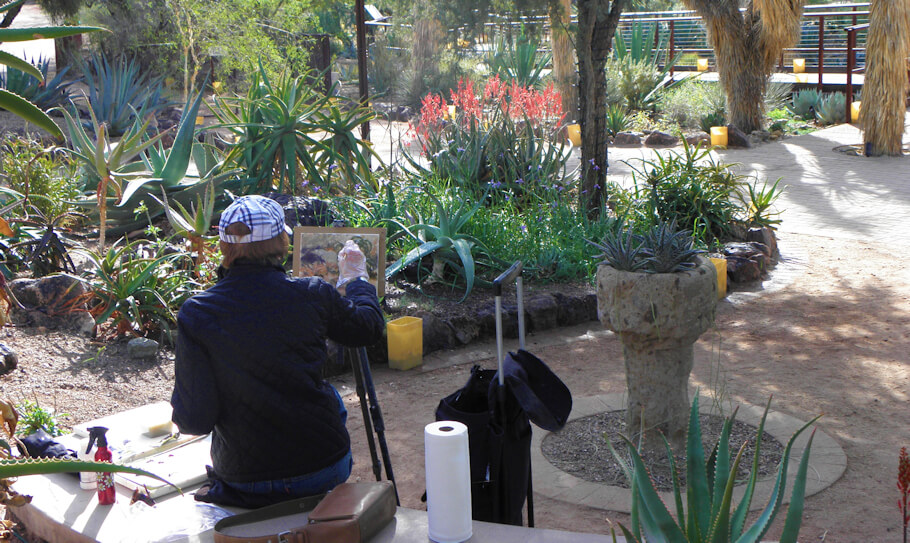Scottsdale, Arizona, Where Old West Meets Modern Chic
Author: Victor Block
Published: 2025/08/03
Publication Type: Informative
Category Topic: Disability Travel America - Academic Publications
Page Content: Synopsis - Introduction - Main - Insights, Updates
Synopsis: This article provides a travel guide to Scottsdale, Arizona, showcasing how this unique destination successfully blends Old West heritage with modern luxury amenities. The piece highlights Scottsdale's diverse attractions, from high-end shopping at world-famous retailers like Gucci and Tiffany to authentic cowboy experiences and Native American cultural sites. Particularly noteworthy is the city's commitment to accessibility through its comprehensive ADA Self-Evaluation and Transition Plan, making attractions more welcoming for visitors with disabilities and seniors. The article explores the natural wonders of the Sonoran Desert, including educational opportunities at the Desert Botanical Garden and McDowell Sonoran Preserve, while also covering historical sites like the Pueblo Grande Museum. For travelers seeking both adventure and sophistication, this destination offers everything from horseback riding in desert wilderness to art galleries and gourmet dining, creating an inclusive experience that caters to varied interests and accessibility needs - Disabled World (DW).
Introduction
Bejeweled women dressed in the latest fashions stroll into Gucci, Neiman Marcus and Tiffany, intent on adding to their wardrobe and adornments. My wife Fyllis is learning to rope cattle and clean horses' hooves. The first impression my wife Fyllis and I had during our visit to Scottsdale, Arizona, was the diversity of attractions. Shopping alone provides an introduction to the something-for-everyone variety.
Main Content
World-famous stores are neighbors to specialty shops and boutiques. In the self-proclaimed "West's Most Western Town," it's no surprise to pass places selling cowboy hats, boots and everything worn between them.
Where there were cowboys there usually were Native Americans, and their influence remains strong. The Native Art Market, which is indigenously owned and operated, represents some three dozen tribes. Fortunately for those with a disability, Scottsdale is in the process of implementing its citywide ADA Self-Evaluation and Transition Plan. That is a comprehensive project to identify and remove barriers to access in city programs, services, and facilities.
The Scottsdale ADA Transition Plan assesses the city's buildings, programs, services, activities, and communications for compliance with the Americans with Disabilities Act. The goal is to utilize ways to fix any accessibility issues and serve as a guide in addressing accessibility needs.
This will be done in a way that preserves the cowboy flavor of the town. Fyllis had a taste of that while playing the role of a working cowgirl. Part of her experience included a horseback ride in the Sonoran Desert. That vast wilderness stretches through Arizona, California and northern Mexico, covering an expanse about the size of Colorado.
It's a cactus heaven. The majestic saguaro (pronounced suh-WAHR-oh) can reach 50 feet in height and live as long as 200 years. They grow wild only in the Sonoran Desert.
Other cactus species also find the Sonoran's conditions inviting. Colorful names like purple prickly pear and teddy-bear cholla add to their appeal.

What appears to be an uninhabitable wasteland in reality is home to some 60 mammals and 350 types of birds. Their survival techniques are among Mother Nature's intriguing stories.
Many animals sleep in shade during hot days and venture out on cooler nights. Some survive on water they get from their food. The western banded gecko stashes away sustenance and water in its tail for use when needed.
Some of the desert's magnificence is captured in sanctuaries and museums. The McDowell Sonoran Preserve is a mini-wilderness that's home to hundreds of types of plants and animals, and 230 miles of hiking trails.
Five paths meander through the Desert Botanical Garden past its collection of plants from barrens around the world. Each path focuses upon one topic, including plants of the Sonoran, desert wildflowers and conservation. Exhibits about how people lived in the hostile environment include how Native Americans used plants for food and medicine. Fyllis and I checked out the kind of roundhouse they once built, and paused at a grinding stone to pound mesquite beans into flour as they did.

The Pueblo Grande Museum and Archaeological Park sits atop remains of a village of the Hohokam people, who inhabited the area from about 450 to 1450 AD. They were the first to cultivate the Sonoran Desert, using a system of irrigation ditches. Some of the trenches, and a ball court, still are visible.
Along with museums, Scottsdale's neighborhoods combine interesting historical tidbits with shopping and recreational opportunities. The center of much action is the Old Town neighborhood.
Located on the original site from which the community expanded, it's a hub of museums, historic structures, dining and shopping. From cowboy wares to Native American jewelry to brand-name items, any shopper who can't find ways to spend money there isn't trying.
Old Town also is crammed with many of the city's more than 40 art galleries. Even the streets serve as an outdoor museum, with dozens of works including a giant lizard, a metal rider astride a bucking horse and a number of less identifiable abstract sculptures on display.

Very different in atmosphere and appeal are tiny enclaves on the outskirts of Scottsdale. Cave Creek (population about 5,200) was settled in 1870 by miners and ranchers, and served as a stopping point for U.S. Cavalry troops. The town clings proudly to its western stores selling cowboy gear, colorful saloons and periodic rodeos.
While Cave Creek keeps alive vestiges of the Old West, the adjacent village of named Carefree represents the present. It was built as a planned community of homes, some now valued at millions of dollars, which line streets with names like Easy, Tranquil, Ho and Hum.
Locals describe this juxtaposition of Old and New West as the "home of cowboys and caviar." That same comfortable marriage of old with new, casual with chic is experienced everywhere. It's common in and around Scottsdale to see men and women wearing jeans and western hats strolling out of shops that would feel comfortable on New York's Fifth Avenue or Rodeo Drive in Beverly Hills, laden down with high-end purchases.
Fyllis and I came upon a gourmet hamburger restaurant, where the parking lot often is packed with top-of-the-line automobiles, which locals call "Burgers and Bentleys." This combination of upscale life with a laid-back attitude adds to the charm and appeal of Scottsdale.
Insights, Analysis, and Developments
Editorial Note: The genius of Scottsdale lies not just in its ability to preserve authentic Western culture while embracing contemporary luxury, but in its recognition that true hospitality means ensuring all visitors can participate in the experience. As cities across America grapple with balancing heritage preservation and modern accessibility, Scottsdale's approach offers a compelling model where cowboys and caviar coexist harmoniously, proving that inclusivity and authenticity need not be mutually exclusive - Disabled World (DW). Author Credentials: Victor Block has been a travel journalist for many years, and has written for major newspapers, magazines and travel websites and served as an editor of Fodor's Travel Guides. He is a member of the Society of American Travel Writers and the North American Travel Journalists Association. Victor is a regular contributor of reviews to the Disabled World travel section. Visit Victors's biography for further insights into his background and expertise.
Author Credentials: Victor Block has been a travel journalist for many years, and has written for major newspapers, magazines and travel websites and served as an editor of Fodor's Travel Guides. He is a member of the Society of American Travel Writers and the North American Travel Journalists Association. Victor is a regular contributor of reviews to the Disabled World travel section. Visit Victors's biography for further insights into his background and expertise.